Rail Road
Terms, Words
& Terminology
|
|
Terms and Terminology used on the Rail Road Track
By: The Working Man
Railroading, as most industries has its own set of words,
terms and terminology which is used to communicate among
the rail workers.
Here is a list of railroading terms and words commonly
and uncommonly used when working on the rail roads.
A coal train pulling in to get loaded.
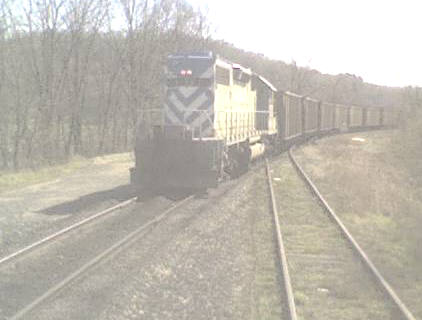
Ballast: usually gravel which is used as a base for
the track road bed and in between the ties.
Bolting Machine: has a gas motor on it which is manually
pushed downs the tracks and removes the nuts and tightens
them back up on the joint bolts.
Cribs: another name for ties
Field Weld: welding a joint, or welding two rails together
out in the field or out on the tracks.
Fire Snake: Gel filled packets which look like sausage and
about 10 feet long. The fire snake is placed on the base of the
rail and then lit which causes the rail to expand thus being
able to fix pull aparts.
Fire Snake heating up a couple of pieces of rail
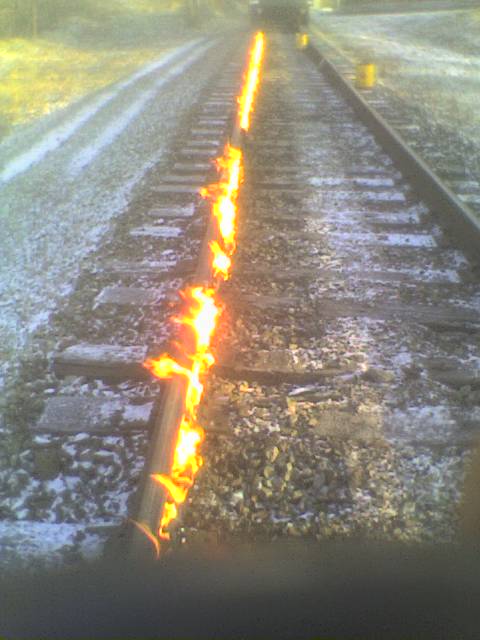
Fish Plate: see joint bars.
Frog: heavy piece of metal which switches tracks from
mainline to a siding. Is made of magnesium and most are
made in China. No one has a good recycyling for frogs
and scrap dealers won't take them. There are thousands of
used frogs laying around in rail yards across the country.
Gandy Dancer: laborer who sets or drives spikes.
Grinder: machine which uses grinding wheels to grind
the rails back to proper profile.
Joint Bar: connector made of metal which has 6 holes
drilled in it which connects two pieces of rail together.
On underground tracks in mines the joint bars are called
fish plates.
Regulator: machine which has a plow in the front, broom
in the back, and wings on the side which is used for
moving and spreading ballast. Some have attachments for
snow blowers and brush cutting.
Siding: set of tracks separate from the mainline tracks
where trains and equipment can get off the mainline.
Spiker: machine operated by 3 men, there is one operator
on each side of of the machine which drives spikes into
the ties, the 3rd man keeps the spikes loaded.
Spike Driver
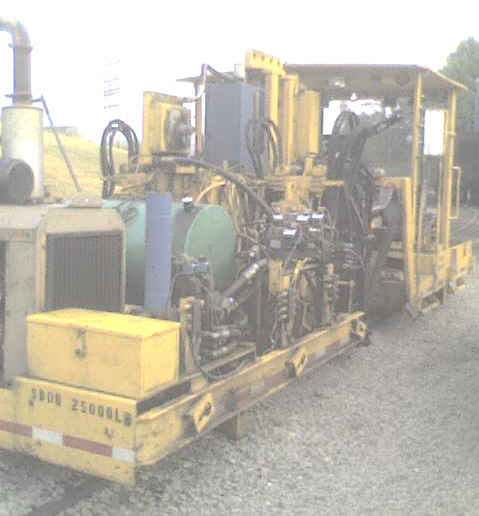
Spike Puller: machine which automatically pulls spikes.
Spike Puller
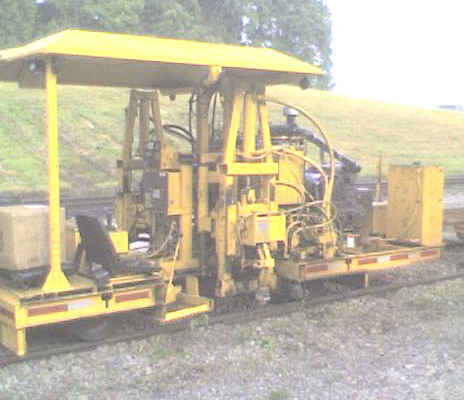
Switch Grinder: machine which is used for grinding the
rails to profile in switches.
Switch: switches "throw" the track to a siding or
back to mainline so trains and equipment can be switched
from one set of tracks to another.
Tamper: machine which lines and puts in elevation in
track using a patented system by Jackson which reads
track conditions as they are, then the operator can
move the track to where he wants it. Most tampers now
have an on board computer system which puts the track
automatically to where the operator sets the computer.
A jack beam on the tamper lifts and places the rail, then
work heads tamp the ballast around and under the ties
to hold the track in place.
Tie Crane: machine which has a boom on it which is used
to move and place ties or kegs of spikes or bolts.
Knox Kershaw Tie Crane
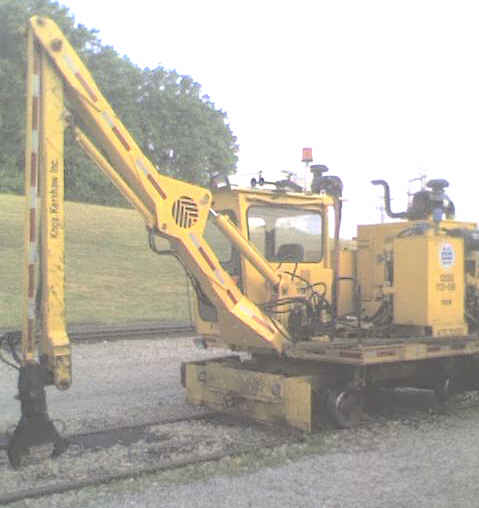
Tie Remover: the tie remover clamps the rail then using
a hydraulic arm pulls the ties out from under the rail
and then inserts a new tie in it's place. Some call
this machine a TKO.
Tie Remover
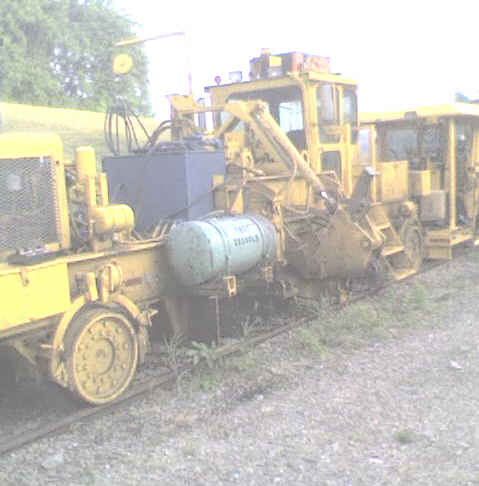
Tie Plate: the piece of metal which is spiked to the ties
having a groove in it which the rail is laid on then
the rail is spiked through the tie plate into the tie.
Under Cutter: machine which rides the rails and has an arm
which has bits which digs out the ballast underneath the track
without needing to move the track. Ballast is then put on a
conveyor belt and unloaded off to the side of the track
Under Cutter
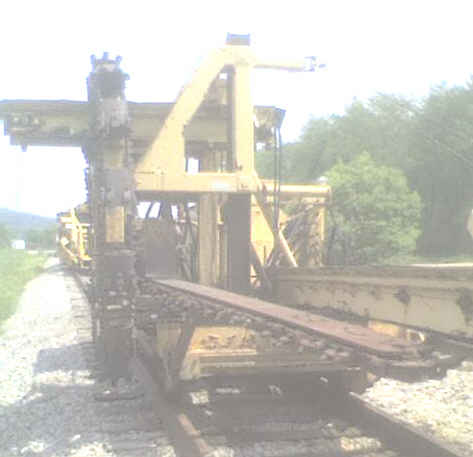
All about the Railroads
|